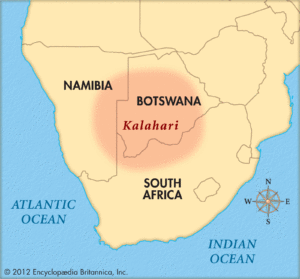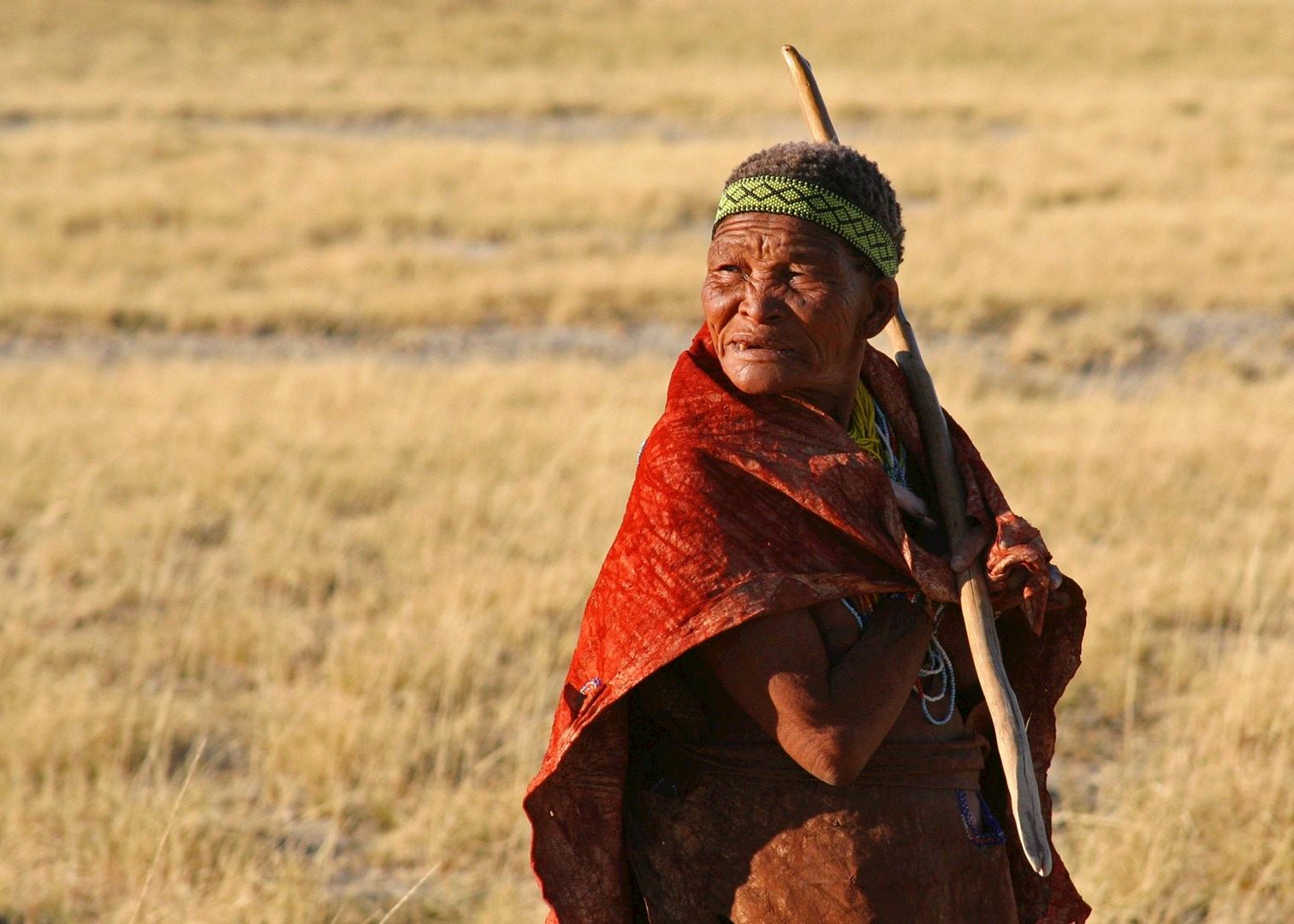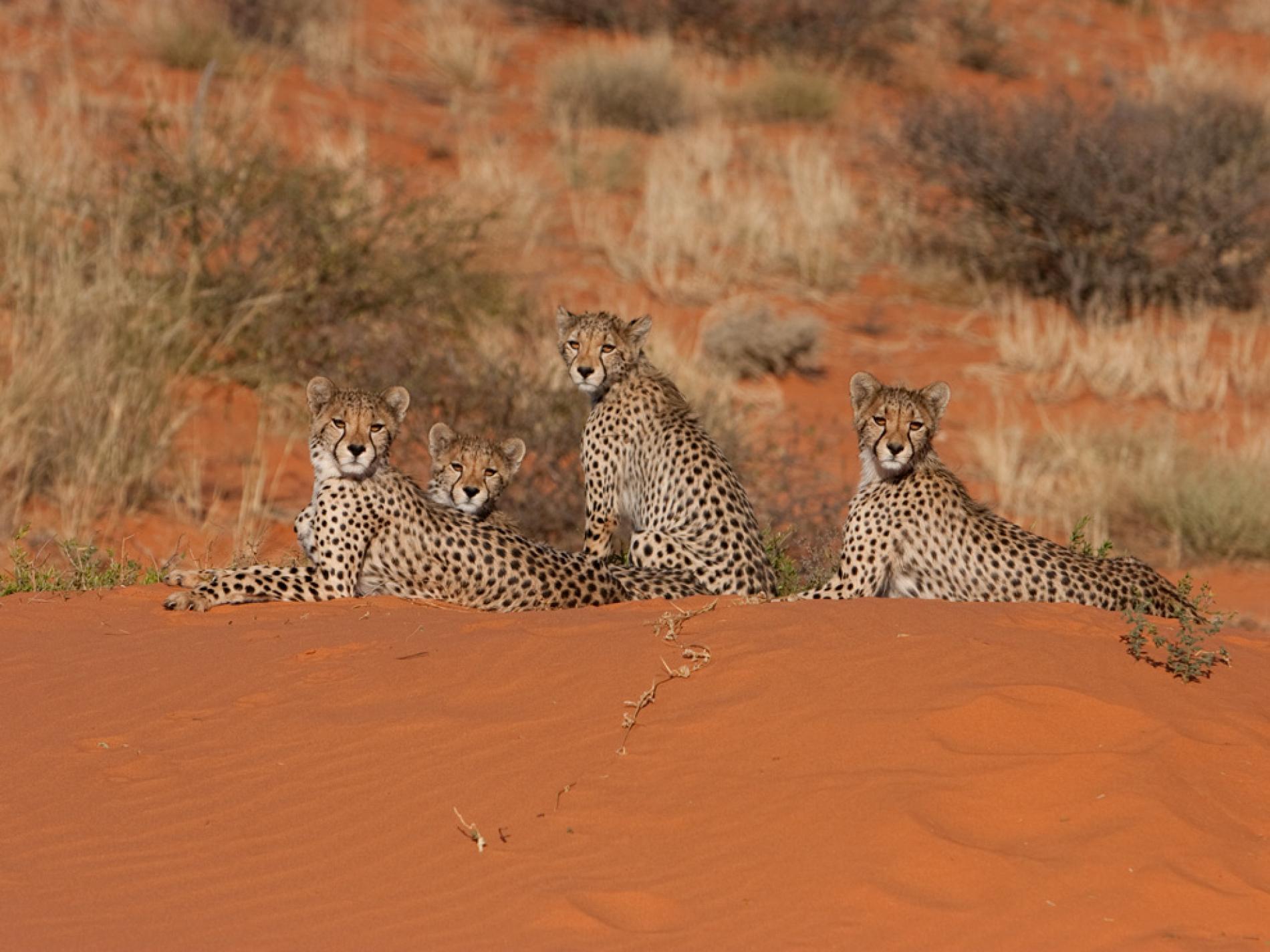The Kalahari Desert
The Kalahari derives its name from the Tswana term, Keir, which means, “the great thirst”, or Karagare, a tribal word meaning “a waterless place”.

Geography and climate
The Kalahari Desert cuts across Botswana, Namibia and South Africa, its sand dunes form the largest continues mass of sand in the world.
The Kalahari receives too much rain, as a desert region only receives between 5 to 10 inches of annual rainfall.
The aridity and semi-aridity of the desert come from the expansive sandy terrain that filters precipitation aggressively, leaving the surface devoid of any water.
People and culture
The primary inhabitants of the Kalahari are Bantu-speaking Africans, the Khoisan-speaking San, and small groups of Europeans.
The San have lived in the Kalahari for the last 20,000 years, making them Southern Africa’s oldest continuous residents. They are nomadic hunter-gatherers. Today, however, the remaining San have adopted sedentary lifestyles binding them to towns and modern life. Most San are now employees at cattle ranches in the Ghanzi District. Very few San continue to hunt and gather in the wild.
The Bantu speakers, the Tswana, Herero, and Kgalagadi, came to the Kalahari in the late 18th century. In the remoter parts of the Kalahari, the Bantu live in villages hosting between 200 and 5,000 people. They live mostly in single-roomed huts with thatched roofs and mud walls. Cattle rearing, the Bantu’s main economic activity, takes place in the villages’ outskirts. Goats provide milk and meat for domestic consumption. They have state-run primary schools and the main means of local transport are donkeys and horses.
The first Europeans in the Kalahari came in the 19th century as ivory hunters, traders, missionaries, and travelers. Despite living in poverty and isolation for many years, today’s Europeans in the Kalahari are landowners and have improved living standards. Most are government employees or private enterprises.


Plants and Animals
The Kalahari has a decent vegetation cover comprising mainly of shrubs, deciduous trees, and grass tussocks. The vegetation has adapted to the erratic and infrequent rainfall. The drier southwestern region of the desert, which has low precipitation, consists mainly of short grasses and shrubs, which are drought-tolerant. The region has very few trees or large bushes. Central Kalahari, which receives higher rainfall than the southwest, has scattered acacia tree species, grass, and shrubs.
Northern Kalahari’s vegetation has no indication of desert life. The region has palm trees, open woodlands, deciduous and evergreen forests with trees growing to heights of 50 feet. Some are even suitable for timber. The Baobab is a popular and unusual tree that grows in Northern Kalahari.
The Kalahari has a many types of animal life though varied in the North more than in the South. Despite the variation, many animal species thrive and survive for long periods of time without surface water in the arid south. The springbok, hartebeest, and gun (wildebeest) are the dominant species in the south. The gemsbok (Oryx), steenbok, duiker, kudu, and eland appear in large herds.
Northern Kalahari is your typical national park supporting a large variety of animals-zebras, elephants, giraffes, antelopes, and buffaloes. Predators such as cheetahs, leopards, lions, foxes, and hunting dogs also thrive in the North. Hyenas, jackals, warthogs, anteaters, beats, baboons, hares, and porcupines are medium-sized mammals found in there. The area also has a variety of rodents, lizards, snakes and a robust birdlife.
